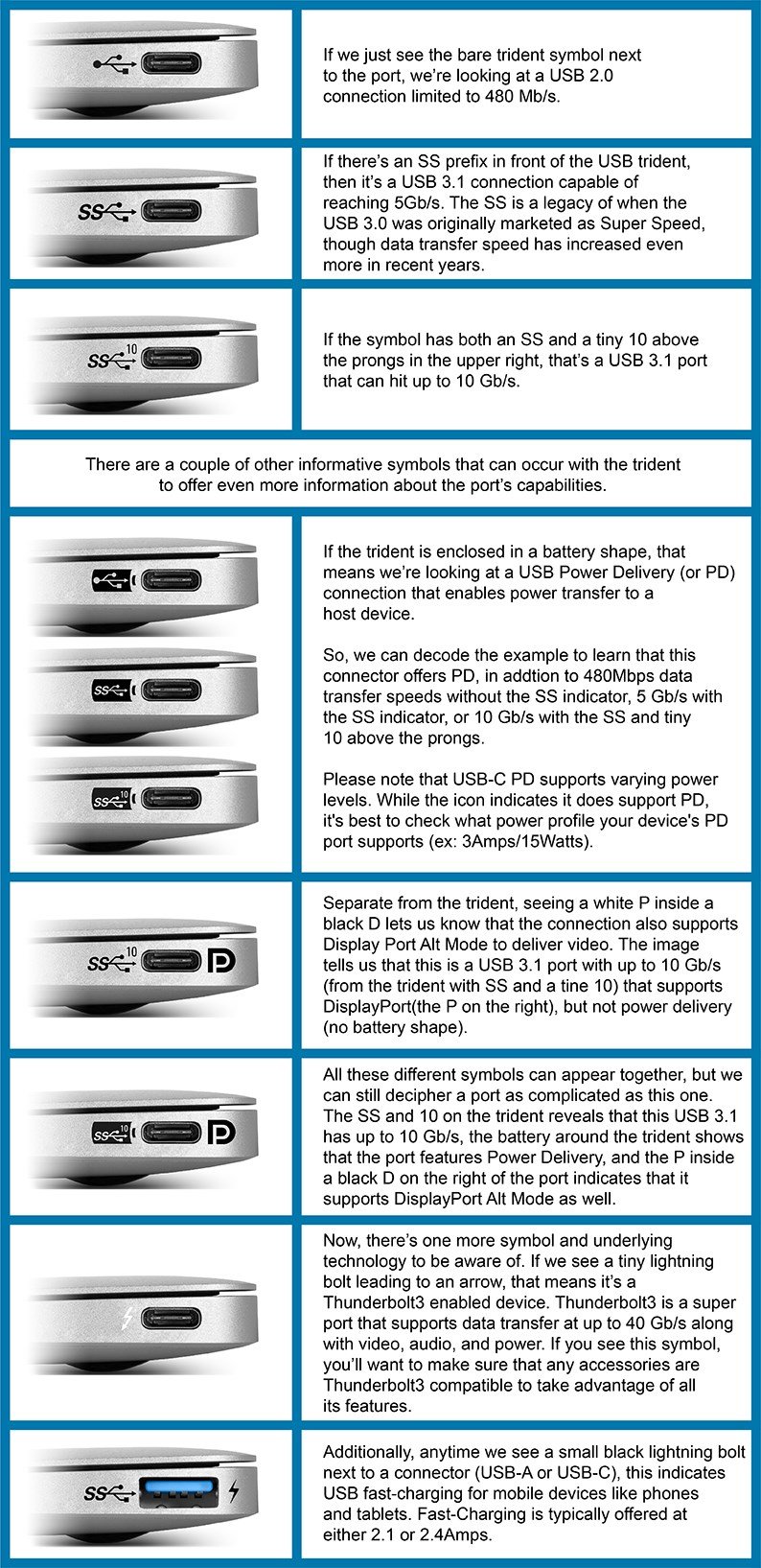this post was submitted on 09 Sep 2024
9 points (100.0% liked)
Technology
59651 readers
2643 users here now
This is a most excellent place for technology news and articles.
Our Rules
- Follow the lemmy.world rules.
- Only tech related content.
- Be excellent to each another!
- Mod approved content bots can post up to 10 articles per day.
- Threads asking for personal tech support may be deleted.
- Politics threads may be removed.
- No memes allowed as posts, OK to post as comments.
- Only approved bots from the list below, to ask if your bot can be added please contact us.
- Check for duplicates before posting, duplicates may be removed
Approved Bots
founded 1 year ago
MODERATORS
you are viewing a single comment's thread
view the rest of the comments
view the rest of the comments

It gets even better, each function of the port also needs proper support from the cable. Often cables do not support the full spec of usb to cut costs.
While the symbols in the post are often put on computers, for usb cables this is seldom done (only a few brands do).
Source: had to find a cable that supports both DP and PD to connect a portable external monitor after I lost the original cable. (1/9 cables worked)
Sometimes people want to charge their phone in an outlet 10 feet from their airport seat.
Sometimes people want to transmit 8k video.
It's not physically possible to do both tasks with the same cable.
But because USB is a flexible standard, we don't have two incompatible specs to do the same thing. So when you get out of the airport and to your meeting, you can actually plug your phone into the meeting room projector for your business presentation. That's a win.
Yeah, it's gotten so bad I eventually ordered a USB cable checker to figure out what any given USB cable is capable of (and to see if the cable has gone flaky, which seems to happen a lot). I haven't received it yet so I don't know if I can recommend this item, but ... gosh darn you sure need something like this.
Luckily, all new PC seem to choose Thunderbolt over only alt mode, which makes stuff more easy, since they have the flash on the cable (but are also more extensive, I gear
Yes, this is incredibly annoying and it's also the reason why some USB cables cost more than others, even they may look the same superficially.
One of those cables that don't work is rated for like 120W, with gigabit transfer speed... But it refuses to transmit display.... Like bruh
That sounds like a dedicated charging cable. So yeah, they will (if at all) only transfer data slowly and not support any extras features like displayport.
A dedicated charging cable wouldn’t have “gigabit speed”
No USB cable has “gigabit speed”. It probably has 480 Mbps (USB 2.0 standard).
Maybe he meant a 5 Gbps Gen1 cable. That would be “gigabit speed” but still rather slow by today's standards and won't support DP. They are pretty cheap these days, so wouldn't be suprising to see left over stocks being sold as charging cables.
What? I'm either misunderstanding you or this statement isn't correct. Having USB cables that can move data at gigabit rates has been common for quite some years.
Here's the latest stuff:
https://en.wikipedia.org/wiki/USB4
I meant that no USB standard actually has exactly 1 Gbit/s. I even mention that next one if 5Gbit/s. Just a misunderstanding I think.
1080p at 60 Hz is 4.4 gigabit
USB-C video is usually DisplayPort Alt Mode, which uses a completely different data rate and protocol from USB.
Even using old 2016 hardware, a computer and USB-C cable that both only support 5 Gbps USB (such as USB 3.1 Gen 1) can often easily transmit an uncompressed 4K 60Hz video stream over that cable, using about 15.7Gbps of DisplayPort 1.2 bandwidth. Could go far higher than that with DP 2.0.
Some less common video-over-USB devices/docks use DisplayLink instead, which is indeed contained within USB packets and bound by the USB data rate, but it uses lossy compression so those uncompressed numbers aren't directly comparable.
Didn't really think about that one but you're right damn... (Looked it up, and it depends on the bit depth etc, but it's around 3.2Gbps for the display settings if I'm correct)... So that explains a lot
For that portable monitor, you should just need a cable with USB-C plugs on both ends which supports USB 3.0+ (could be branded as SuperSpeed, 5Gbps, etc). Nothing more complicated than that.
The baseline for a cable with USB-C on both ends should be PD up to 60W (3A) and data transfers at USB 2.0 (480Mbps) speeds.
Most cables stick with that baseline because it's enough to charge phones and most people won't use USB-C cables for anything else. Omitting the extra capabilities lets cables be not only cheaper but also longer and thinner.
DisplayPort support uses the same extra data pins that are needed for USB 3.0 data transfers, so in terms of cable support they should be equivalent. There also exist higher-power cables rated for 100W or 240W but there's no way a portable monitor would need that.